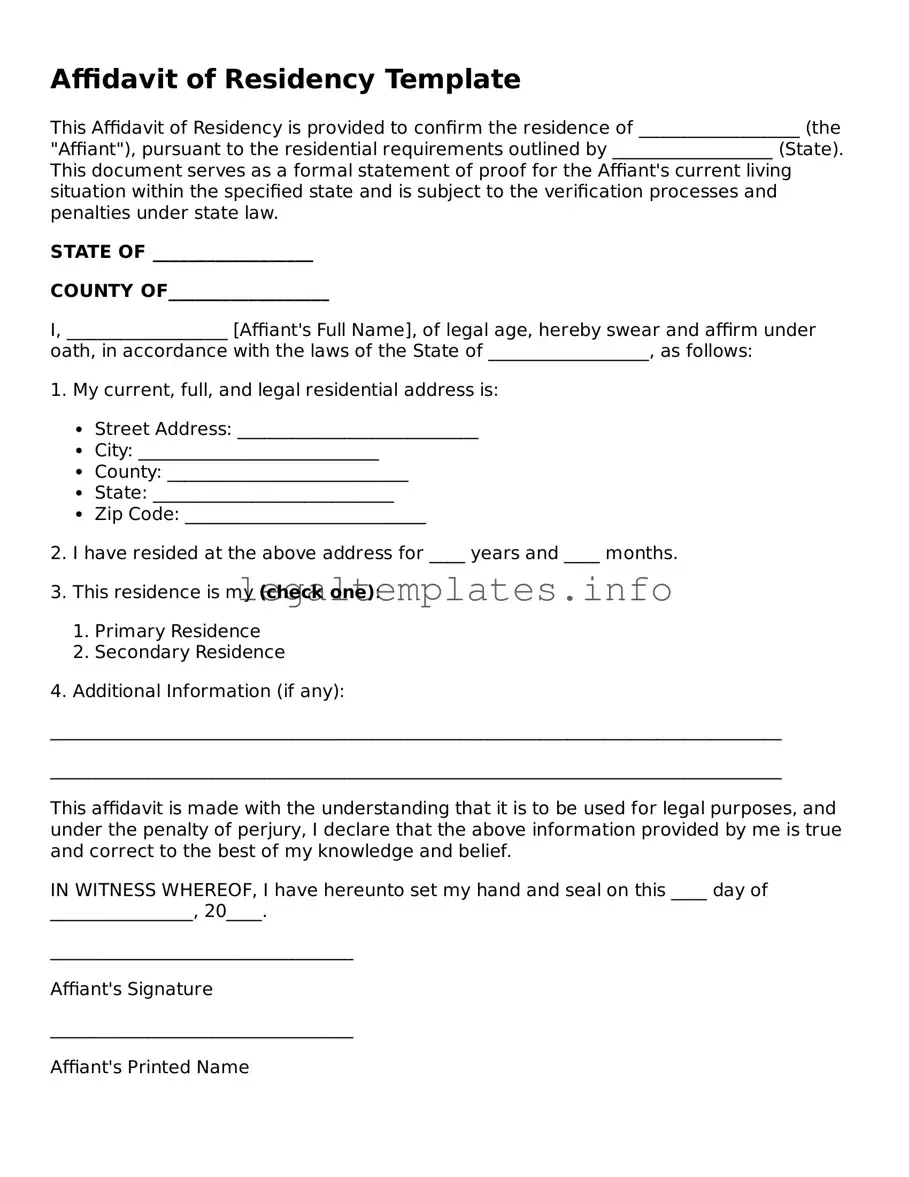Affidavit of Residency Template
This Affidavit of Residency is provided to confirm the residence of __________________ (the "Affiant"), pursuant to the residential requirements outlined by __________________ (State). This document serves as a formal statement of proof for the Affiant's current living situation within the specified state and is subject to the verification processes and penalties under state law.
STATE OF __________________
COUNTY OF__________________
I, __________________ [Affiant's Full Name], of legal age, hereby swear and affirm under oath, in accordance with the laws of the State of __________________, as follows:
1. My current, full, and legal residential address is:
- Street Address: ___________________________
- City: ___________________________
- County: ___________________________
- State: ___________________________
- Zip Code: ___________________________
2. I have resided at the above address for ____ years and ____ months.
3. This residence is my (check one):
- Primary Residence
- Secondary Residence
4. Additional Information (if any):
__________________________________________________________________________________
__________________________________________________________________________________
This affidavit is made with the understanding that it is to be used for legal purposes, and under the penalty of perjury, I declare that the above information provided by me is true and correct to the best of my knowledge and belief.
IN WITNESS WHEREOF, I have hereunto set my hand and seal on this ____ day of ________________, 20____.
__________________________________
Affiant's Signature
__________________________________
Affiant's Printed Name
Subscribed and sworn to (or affirmed) before me on this ____ day of ________________, 20____, by ________________________________, proved to me on the basis of satisfactory evidence to be the person(s) who appeared before me.
__________________________________
Notary Public's Signature
My commission expires: ________________
